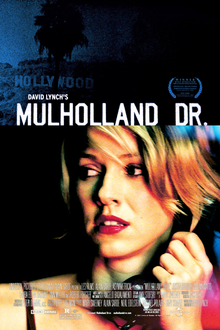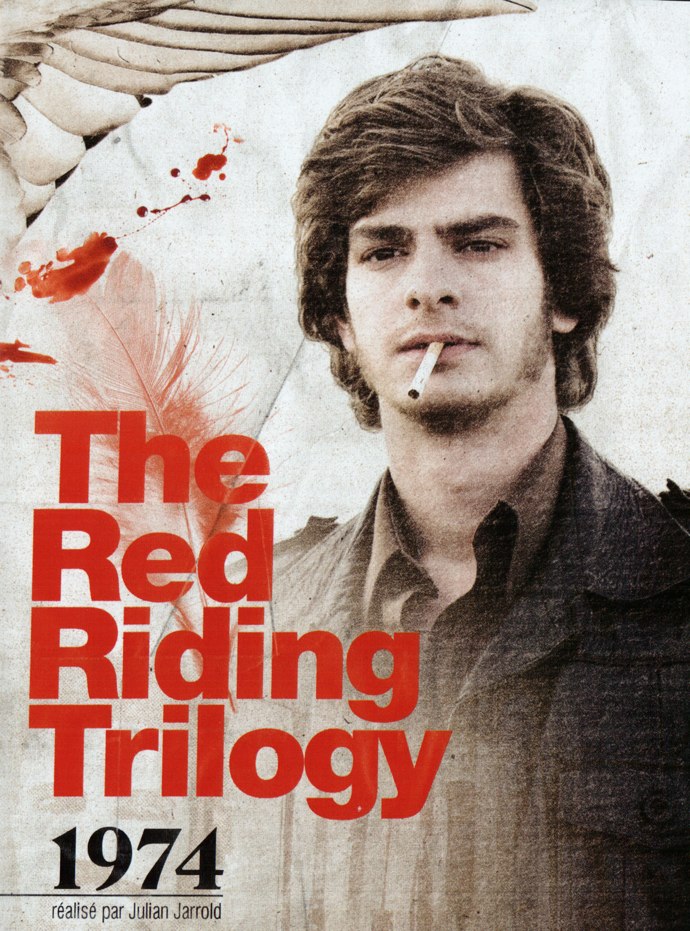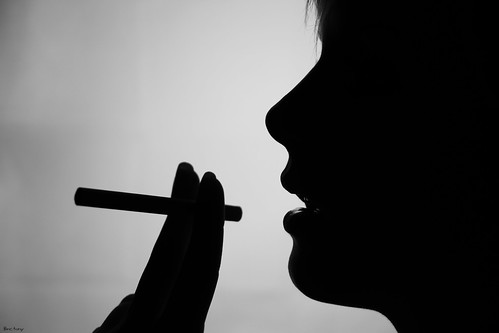Foleying is the method of recording a sound from objects live, or pre recorded, then adding it to a scene to match the action being displayed. This method can make it sound better as the sound is easier to hear, and can make for much easier filming.
This being said, foleying is difficult, and takes time to master.
Foleying is described as an art form that requires a lot of effort, timing and a creative mind.
Which a lot of people think they have, but when it comes down to it, they don't.
I looked at a video about foleying called - Soundworks Collection: Gary Hecker - Veteran foley artist, which shows different techniques to foleying, such as using various metal sounds to create a car crashing off a plane ramp, or using boxing gloves scraping sand to sound like a car's wheels sliding on a desert floor.
Foleying when mastered can be a great weapon to use to make films seem that much better.
I believe that foleying, although seemingly difficult can be a very good concept to use in films to create a better sounding film, aswell as making the sounds seem more realistic. Films such as titanic benefitted very well because of foleying, and believe if i pull it off, my OTS will be better than i thought possible.
Tuesday 28 February 2012
Monday 27 February 2012
Certifications - BBFC - 18
 18's may contain detailed violence, dangerous acts or illegal drug use.
18's may contain detailed violence, dangerous acts or illegal drug use.Also, sexual behavior or sexual violence can be used as long as it's intented as a story, not to stimulate an individual.
It's also permitted if educating about safe sex, health or human sexuality.
Any film classified as 18, may only be viewed by a person 18 or older.
Key conventions of titles in Noir and Neo Noir films
The font of titles is usually block, or slanted so it stands out more.
In pretty much every case the title is a bright blood red color, signifying many things such as anger or violence, but also attraction or lust.
The use of red is because most noir films contain violence as most of the plot, as well as sexual attraction between the femme fatale and anti-hero.
 Most of the titles are short, usually 1 or 2 words maximum. For example, Sin City, Mulholland Drive, The Killers.
Most of the titles are short, usually 1 or 2 words maximum. For example, Sin City, Mulholland Drive, The Killers.
Sin City's title has pretty much every convention of a Noir film, and is a great example.
The color is bright red which symbolizes anger and violence, but it also stands out very well as the background is very dark.
Also, the font is quite thick, but it almost looks like a comic book font. This is great, because it's blocky and slanted, but still interesting as it's different.
The title itself is also only 2 words, but is still very impacting because SIN is a very iconic word that relates to most things bad and evil.
In pretty much every case the title is a bright blood red color, signifying many things such as anger or violence, but also attraction or lust.
The use of red is because most noir films contain violence as most of the plot, as well as sexual attraction between the femme fatale and anti-hero.
 Most of the titles are short, usually 1 or 2 words maximum. For example, Sin City, Mulholland Drive, The Killers.
Most of the titles are short, usually 1 or 2 words maximum. For example, Sin City, Mulholland Drive, The Killers.Sin City's title has pretty much every convention of a Noir film, and is a great example.
The color is bright red which symbolizes anger and violence, but it also stands out very well as the background is very dark.
Also, the font is quite thick, but it almost looks like a comic book font. This is great, because it's blocky and slanted, but still interesting as it's different.
The title itself is also only 2 words, but is still very impacting because SIN is a very iconic word that relates to most things bad and evil.
Monday 20 February 2012
OTS
Rules - max 2 mins.
Genre - film noir/ neo-noir/ parady. Or post modern homage.
Original sound track - Music
- Dialogue
- Effects.
With titles.
Remember - An OTS not a trailer.
An established enigma - provide a hook - introduce the plot.
Genre - film noir/ neo-noir/ parady. Or post modern homage.
Original sound track - Music
- Dialogue
- Effects.
With titles.
Remember - An OTS not a trailer.
An established enigma - provide a hook - introduce the plot.
Saturday 18 February 2012
Neo Noir - Mulholland Drive - Typical/ Non typical
 MulHolland drive is another example of Neo-noir. It, like red riding, has typical and non typical stuff contained in noir.
MulHolland drive is another example of Neo-noir. It, like red riding, has typical and non typical stuff contained in noir.Typical:
It contains darkened or distilled lighting. Not many heavily lighted scenes.
The scenes are longer, just like in the old noir films.
The plot is about crime. In this case, and attempted murder.
There are a lot of shadows, like people, or just large buildings because it is an urban setting.
Non-Typical:
Although there is a lot of fog around, the characters themselves actually don't smoke, which is very unlike traditional noir.
There is almots a role reversal as the femme fatale is scared, again very unlike traditional noir.
Also, it is not in black and white, but to go completely off the scale when there is colour it's brightened, or more noticable.
This can be seen quite clearly in the first scene in which the background is bright purple.
Tuesday 14 February 2012
Neo Noir - The Red Riding Trilogy - Typical/ Non typical
 The Red Riding Trilogy is a neo noir, meaning it's a new styled noir tv series.
The Red Riding Trilogy is a neo noir, meaning it's a new styled noir tv series.It has both typical conventions of a neo noir, and non typical.
Typical:It contains smoking, obscurred lighting and sepia filter lighting just like in traditional noir films.
Also it shows most people in suits, smoking or drinking which is again the same as older noir films.
Another similarity is that the anti-hero is carrying a burden, which in this case is that he is trying to live up to his dead fathers standards.
Just like in noir films, this particular neo noir starts off with a flashback, or atleast a future event.
Non-Typical:
Although it does contain music in the background like usual noir films, the music is based around guitars which is very non-typical of a noir film.
Also, the whole setting has changed. Traditional noir films or tv series' are set in urban surroundings, however this is set in yorkshire.
Another majour thing i notice, is that The Red Riding actually contrains blood. Which was prehibited in the time of traditional noir's.
Aswell as that, there is the obvious use of colour, instead of black and white.
Wednesday 8 February 2012
Sound - Understanding how to use it
My initial thoughts about using sound in film
Sound can be used to create atmosphere at correct moments.
It can also be used bring out certain actions or movements so they are over obvious.
There can be music played in the background to give background noise, and to fill silence, along with sound effects such as slices or punches to emphasise actions.
It is important that the music is relevant to the scene and not too obscure.
Also natural sounds might already be in the scene like wind or character speech.
Reflective comment
I have learnt by looking at sin city a bit more about the different types of sound.
Such as stuff added in like a police siren when there are no police cars around, or amplified sound that is synchronised to the same action in the film.
Sound can be used to create atmosphere at correct moments.
It can also be used bring out certain actions or movements so they are over obvious.
There can be music played in the background to give background noise, and to fill silence, along with sound effects such as slices or punches to emphasise actions.
It is important that the music is relevant to the scene and not too obscure.
Also natural sounds might already be in the scene like wind or character speech.
Reflective comment
I have learnt by looking at sin city a bit more about the different types of sound.
Such as stuff added in like a police siren when there are no police cars around, or amplified sound that is synchronised to the same action in the film.
Tuesday 7 February 2012
Certifications - BBFC - 15

A film with the classification 15 should contain/Not contain the following things:
- Discriminatory langue is allowed, but cannot be endorsed.
- Drugs can be used, but the film cannot show that they are good, or say that misuse of drugs is a positive thing.
- Strong threat is allowed, however it cannot be sexual horror, or sadistic.
- For imitable behavior, it's the same as a 12/12A.
- Strong language can be frequent, and if justified, the strongest bad language can be used, however it cannot be repeated a lot, or aggresive.
- Any amount of natural nudity can be used, and sexual content can be used as long as it isn't in detail.
- If justified, detail can be applied to sexual content, however if not justified it's not allowed.
- Strong violence can be used, but gore cannot unless it's justified.
Films classified as 15's cannot be viewed by anyone under the age of 15.
Certifications - BBFC - 12/12A
 Films with the classification 12/12A should contain/Not contain the following things:
Films with the classification 12/12A should contain/Not contain the following things:-Discriminatory language can be used, if not endorsed or heavily condemned.
- Drug use must be infrequent, and not involve instructional detail.
- Moderate threats of either physical, or psychological but may not be frequent or sustained.
- Cirumstances such as hanging, or suicide can be shown but only in small detail. Easy accesible weapons can also be shown but not be glamourised.
- Moderate language can be used, however strong langue must be infrequent.
 - Nudity is permitted aswell as mild sexual content, but it must not be in detail and must be brief.
- Nudity is permitted aswell as mild sexual content, but it must not be in detail and must be brief.- Sexual references must not go above what is usually permitted for teenagers.
- Violence is allowed, however it must not be in detail, and there should be no emphasis on blood or injury. If justified, there can be mild gore content.
12 is a classification only for DVD's. This means no one under the age of 12 can buy or rent the film.
12A is a classification only for the cinema. This means no one under the age of 12 can view the film, unless permitted by an acompanying adult.
Certifications - BBFC - PG
 Films classifed as PG should contain/ Not contain the following things:
Films classifed as PG should contain/ Not contain the following things:- No discriminatory language should be used unless it is clearly being disaproved.
- No reference's to illegal drugs unless there is a subtle anti-drugs message.
- No prolonged horrofic scenes.
- No detail of actions that may be copied, such as easily accessible weapons.
- Mild language considered "Bad"
- Natural nudity without sexual content.
- Infrequent or discreet sexual content.
- Justified moderate violence.
PG films can be viewed by any child, but are generally classified as 8 or above. This being said, if the parent feels it does not show any reason for a younger child not to view it, then it's fine.
Monday 6 February 2012
Certifications - BBFC - U
Films under the certificate U show no discriminatory language, no reference to illegal drugs, only brief or mild scary scenes, no behavior that is likely to be copied, close to no bad language at all, at least infrequent and only mild, ocasional natural nudity with no sexual content, mild sexual content (Kissing, or reference's to making love only) and any problems must be dealt with sensitively or apropriately for young children.
These are aimed for 4 and above.
These are aimed for 4 and above.
Noir Iconography Collage
Some of the iconography of classic Noir films: Urban settings, Trilby hats, red lipstick and cigarettes or smoke.
Sunday 5 February 2012
Todorov's theory - 2 - The Killers
 As apose to Double Indemnity, The Killers does follow Todorov's theory.
As apose to Double Indemnity, The Killers does follow Todorov's theory. It starts with an equilibrium, and ends with the new equilibrium as it should so by following Todorov's idea.
Although it follows the theory, there are tiny things throughout the film that break the theory but they are too small to make much of a difference. So this classic noir film is a good example when talking about Todorov's theory.
Todorov's theory - 1 - Double Indemnity
This being said, it does not follow Todorov's theory in the sense of equilibrium, a disruption, recognition of the disruption, trying to fix the disruption and then the new equilibrium.
This is because double indemnity starts at the end, therefore starting with a new equilibrium and disrupting the theory.
Other than that, it generally follows the rest of the points so it follows the theory slightly.
This is because double indemnity starts at the end, therefore starting with a new equilibrium and disrupting the theory.
Other than that, it generally follows the rest of the points so it follows the theory slightly.
Subscribe to:
Posts (Atom)






